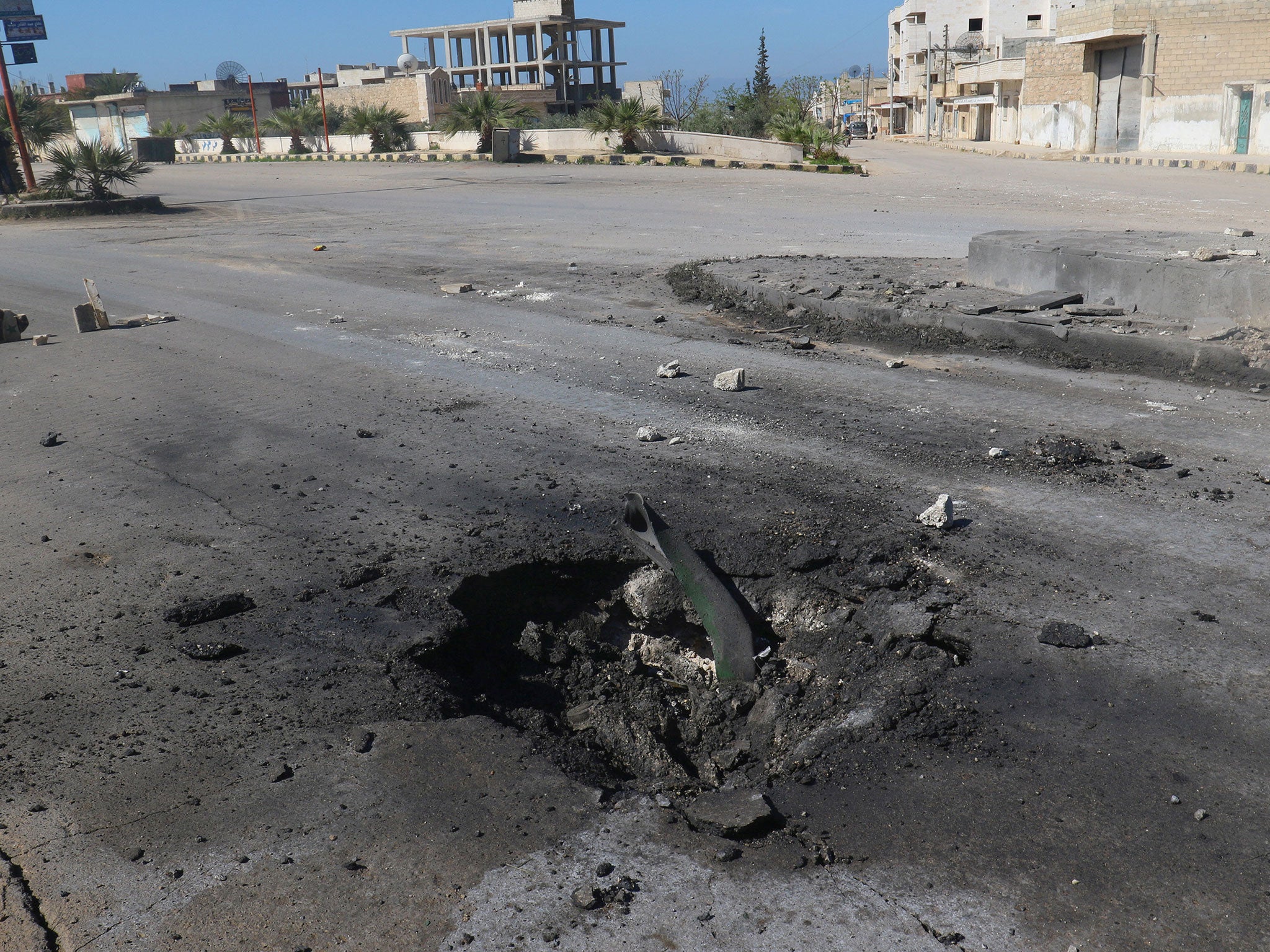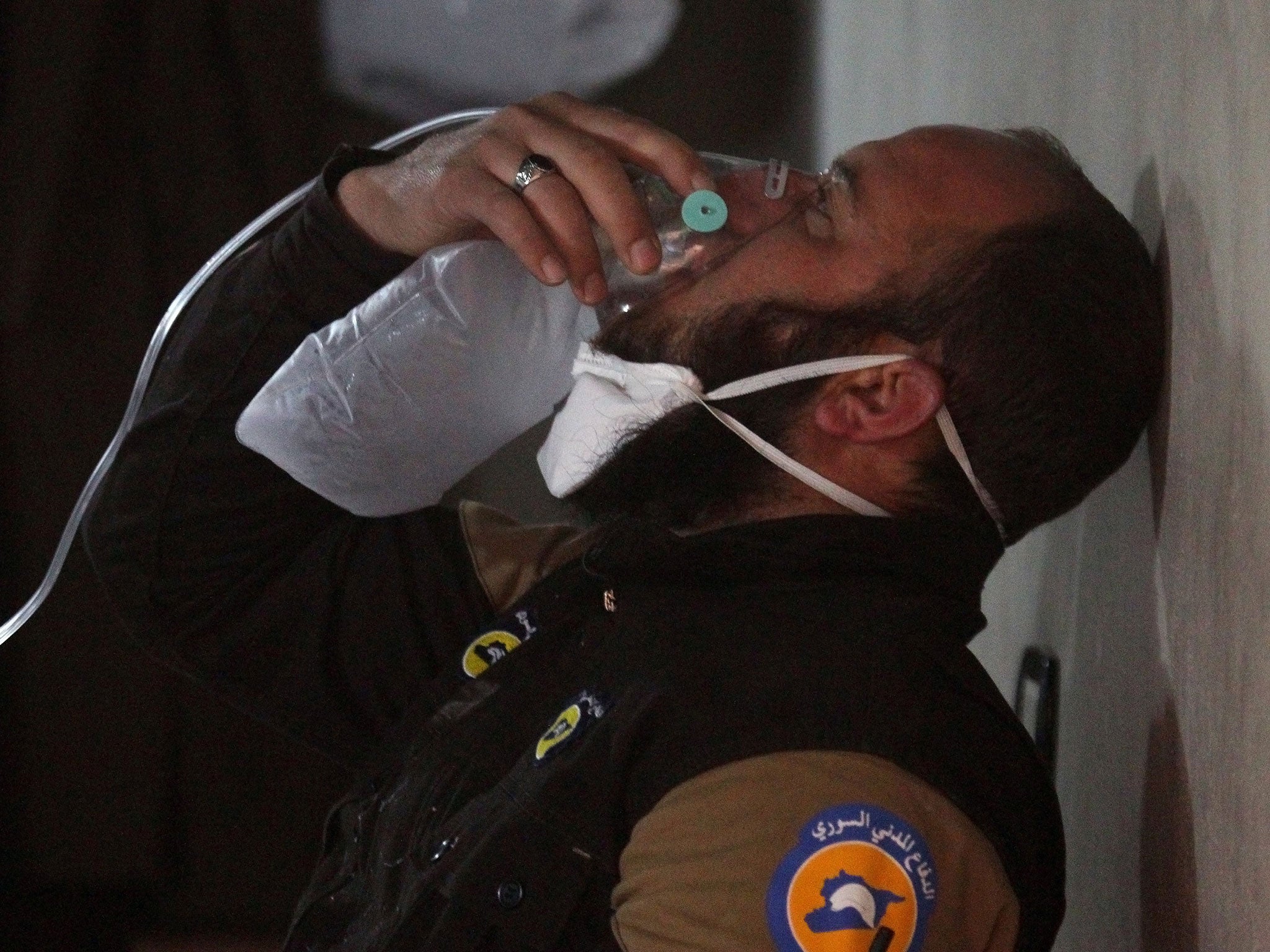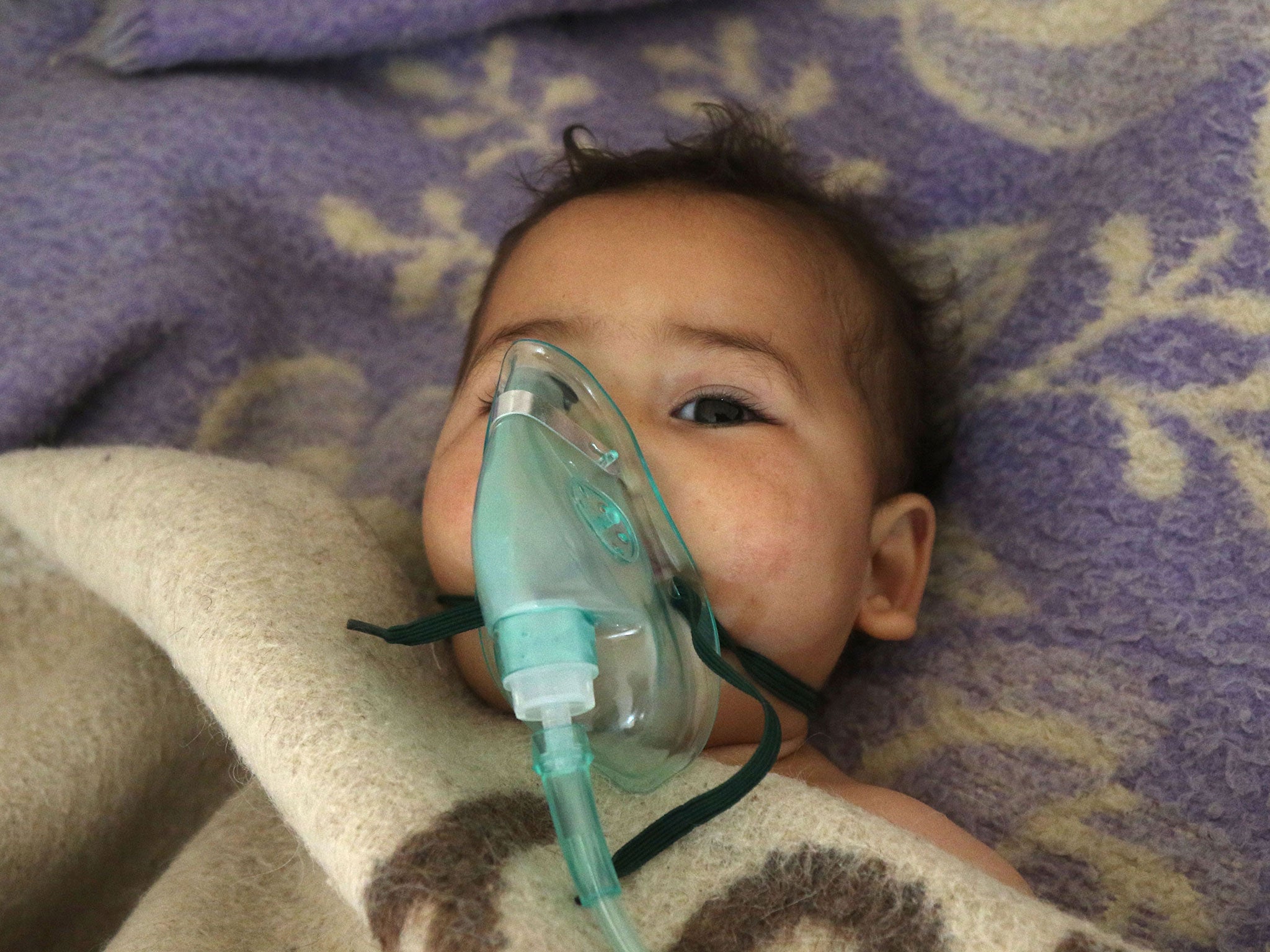Syria chemical attack: Sarin gas likely weapon used in Idlib as experts say Russian claims 'don't add up'
Analysts say rebels lack money or expertise to stock deadly nerve agent

Experts have dismissed Russia’s claim that a rebel chemical weapons facility caused the death of more than 70 people in Syria as evidence indicating the government’s use of a banned nerve agent mounts.
Britain, the US and France are among the nations accusing Bashar al-Assad’s regime of gassing civilians in the opposition-held town of Khan Sheikhoun, but Damascus claims it destroyed its toxic stockpiles following an international agreement struck in 2013.
The Russian defence ministry put out a competing version of events claiming that legitimate Syrian air strikes against “terrorists” had struck a warehouse used to produce and store shells containing toxic gas, which were allegedly being sent to Iraq.
“From 11.30am to 12.30pm local time, [9.30am to 10.30am BST] Syrian aircraft conducted an air strike in the eastern outskirts of Khan Sheikhoun on a large warehouse of ammunition of terrorists and the mass of military equipment,” said Major General Igor Konashenkov, according to a translation by Russian state media.
But witnesses and survivors said the bombs struck hours earlier, with images showing at least one hit a road rather than a building.
Hasan Haj Ali, commander of the Free Idlib Army rebel group, called the Russian statement blaming the rebels a “lie” and said rebels did not have the capability to produce nerve gas.
“Everyone saw the plane while it was bombing with gas,” he said.
“Likewise, all the civilians in the area know that there are no military positions there, or places for the manufacture of weapons.”
While Isis is known to have used mustard gas, the area around Khan Sheikhoun is controlled by a range of opposition factions including Islamists and groups linked to al-Qaeda.
Russia accused fighters of deploying chlorine gas in Aleppo but no evidence to support the allegations has been put forward by international agencies, who believe that sarin was deployed in Tuesday’s attack.
Beyza Unal, a research fellow with the International Security Department at Chatham House, said the banned nerve agent is expensive and difficult to purify and store.
“Something that needs a certain level of expertise and also money,” she told The Independent, saying any facility would need the ability to take oxygen out of the area where sarin is stored.
“I don’t think rebel groups would have the ability governments would have to purify nerve agents to a level that would make them stable,” Dr Unal added.
“I don’t buy the Russian claims…the story doesn’t add up.”
She added that images of bomb craters in Khan Sheikhoun indicated small payloads, rather than explosives of the type typically used to destroy an entire building.
Sarin can be fatal when either inhaled or absorbed through the skin, contaminating water and clothing to affect anyone coming into contact with symptoms including blurred vision, choking, nausea, weakness, convulsions, paralysis and respiratory failure.
Several volunteers who rushed to help victims of the initial bombing have themselves been taken ill, including Syrian Civil Defence members.

Hamid Kutini, a volunteer with the White Helmets, told The Independent he and several of his friends are unwell.
“I reached the area early after the attack and am still suffering now with weakness in my vision, a continuous headache, and I am not seeing colours well,” he said.
Mr Kutini said families were asleep when the bombs struck at around 6.30am local time (4.30am BST), with people calling the White Helmets reporting “strange symptoms” including drowsiness.
“We knew that some kind of poison gas was used,” he recalled. “The team found people fainting, and people with froth coming from the mouth, and shivers in their bodies…many died while they were asleep.”
Graphic footage showed rescuers dragging bodies and survivors out of buildings, removing their clothes and hosing them down with water in attempts to remove the toxin.
Doctors said victims started to choke, vomit and convulse with foam coming out of their mouths and pin-point pupils, showing symptoms of possible sarin gas exposure.
Amnesty International said many of at least 20 children killed appeared to have died in their beds, with the lack of visible wounds on their corpses pointing to a chemical attack.

A nurse working at the al-Rahma hospital, which was later bombed, told the charity he heard the bombs strike but with a dull “thump” that was unlike a normal “explosion sound”. Minutes later, the casualties started pouring in.
The youngest victims were the first to succumb to respiratory failure and paralysis, a doctor said, adding: “Children are the first ones to die, they cannot fight this. We only had one child who, thank God, survived.”
The World Health Organisation (WHO) said the symptoms were consistent with “exposure to organophosphorus chemicals, a category of chemicals that includes nerve agents” that are banned as weapons of mass destruction.
Médecins Sans Frontières (MSF) seconded the analysis, saying medical teams that treated affected patients in Bab al-Hawa found symptoms “consistent with exposure to a neurotoxic agent such as sarin gas”.
Doctors also detected the smell of bleach on some victims, “suggesting they had been exposed to chlorine” as one of at least two different chemical agents.
Hassan Elbahtimy, from the Centre for Science and Security Studies at King's College London, said all evidence available so far pointed to the use of sarin in Khan Shaikhoun.

“In this conflict, it is the regime that ultimately is more capable to mount chemical attacks,” he told The Independent, pointing to the previous sarin attack on Ghouta in 2013.
“They were supposed to have declared all their chemical weapons, including sarin stocks, which got destroyed under international supervision.
“If this turns out to be sarin and the regime is responsible, it means either they did not get rid of all their stocks or managed to reconstitute some of their production and handling capabilities.”
Dr Elbahtimy said Khan Sheikhoun was a “significant” target for Assad’s forces as it borders a motorway connecting government-held cities with rebel strongholds in the north.
The area saw intense fighting in 2016, with previous allegations of chlorine attacks levelled at the government.
Ammar Abdullah, a citizen journalist, told The Independent he had seen chlorine gas before but it was “nothing like this”, adding that friends from Damascus compared the symptoms to those seen in the Ghouta attack.
“How can international society let such thing happen?” he asked.
“More than 70 people lost their lives, and the world is watching with no action...we are losing the hope that anyone will help.”
Join our commenting forum
Join thought-provoking conversations, follow other Independent readers and see their replies
Comments